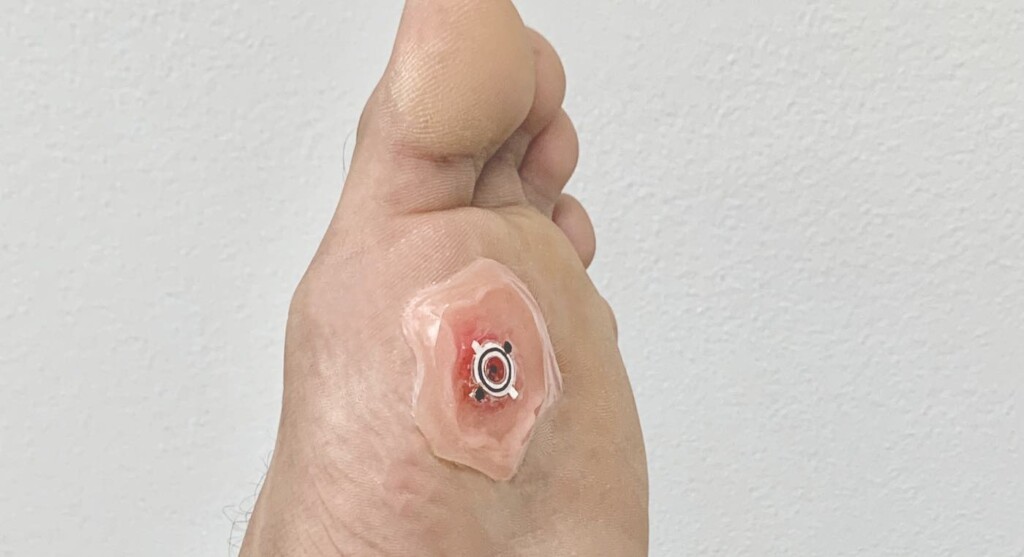
WATER-POWERED ELECTRONICS-FREE BANDAGE (WPED) FOR ELECTRICAL STIMULATION OF WOUNDS – CREDIT: RAJARAM KAVETI (VIA SWNS)
NEW ELECTRIC BANDAGES HEAL WOUNDS 30% QUICKER THAN CONVENTIONAL DRESSINGS
BY: GOOD NEWS JOURNALISTORIGINAL SITE: GOOD NEWS NETWORK
A water-powered electric bandage can heal serious wounds 30% quicker than conventional treatments, according to a new study.
The inexpensive bandages use an electric field to promote healing in chronic wounds, which are slow to heal, if they heal at all—like sores that occur in some diabetes patients.
Doctors say such wounds are “particularly problematic” because they often recur after treatment and significantly increase the risk of amputation and even death.
They explained that one of the key challenges associated with chronic wounds is that existing treatment options are extremely expensive, which can create additional problems for patients.
In animal tests published this week in the journal Science Advances, the international research team evaluated their water-powered, electronics-free dressings (WPEDs), which are disposable bandages with electrodes on one side and a small, biocompatible battery on the other.
“Our goal was to develop a far less expensive technology that accelerates healing in patients with chronic wounds,” said study co-author Dr. Amay Bandodkar, of North Carolina State University.
“We also wanted to make sure that the technology is easy enough for people to use at home, rather than something that patients can only receive in clinical settings.”
Co-author Professor Sam Sia, of Columbia University, said the lightweight bandages provide electrical stimulation simply by adding water, and they work better than bulkier and more expensive wound treatments.
The dressing is applied so that the electrodes come into contact with the wound. A drop of water is then applied to the battery, activating an electric field for several hours.
The electric field is critical, explained co-author Dr. Rajaram Kaveti, who said it is “well established that electric fields accelerate healing in chronic wounds.”
The electrodes are designed so that they can bend with the bandage and conform to the surface of the chronic wounds, which are often deep and irregularly shaped.

(SWNS)
They tested the wound dressings in diabetic mice, which are a commonly used model for human wound healing.
“We found that the electrical stimulation from the device sped up the rate of wound closure, promoted new blood vessel formation, and reduced inflammation—all of which point to overall improved wound healing,” reported co-first author Maggie Jakus, a graduate student at Columbia University.
The mice who received treatment with WPEDs healed about 30% faster than mice who received conventional bandages.
“It is equally important that these bandages can be produced at relatively low cost – we’re talking about a couple of dollars per dressing in overhead costs,” said Dr. Bandodkar.
“There is urgent need for new therapeutic approaches, as the last one that was approved by the Food and Drug Administration was developed more than 25 years ago,” said co-author Professor Aristidis Veves, of Beth Israel Deaconess Center in Boston.
“Diabetic foot ulceration is a serious problem that can lead to lower extremity amputations. (This) may have the potential to revolutionize the management of diabetic foot ulcers.”
AWFSM CATEGORIES
Activism | AI | Belief | Big Pharma | Conspiracy | Cult | Culture | Deep State | Economy | Education | Entertainment | Environment | Faith | Global | Government | Health | Hi Tech | Leadership | Politics | Prophecy | Science | Security | Social Climate | Universe | War
